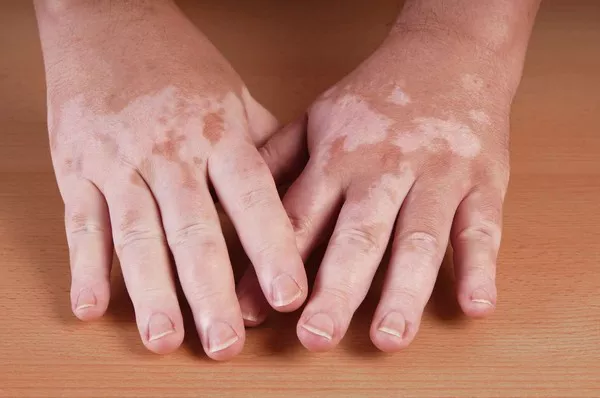Hives, medically termed urticaria, can be an unsettling and uncomfortable skin reaction that occurs shortly after consuming certain foods. For individuals experiencing this perplexing response, it can lead to confusion and concern about what triggers these symptoms. This article aims to delve into the underlying causes of hives after eating, exploring the role of food allergies, sensitivities, and other potential contributors.
What are Hives?
Before delving into the connection between hives and food, it’s essential to grasp what hives actually are. Hives are raised, red, itchy welts that can appear on the skin. They can vary in size and shape and often appear suddenly. Hives are caused by the release of histamine and other chemicals from specialized cells in the skin (mast cells), leading to increased blood flow and leakage of fluid from blood vessels into the skin.
The Relationship Between Food and Hives
For some individuals, hives can be triggered by certain foods. This link is typically associated with food allergies or sensitivities. Food allergies occur when the immune system mistakenly identifies a specific food protein as harmful, triggering an immune response that leads to symptoms such as hives.
Food Allergies vs. Food Sensitivities
It’s crucial to distinguish between food allergies and sensitivities. Food allergies involve the immune system and can be life-threatening in severe cases. Common food allergens include peanuts, tree nuts, shellfish, eggs, and milk. In contrast, food sensitivities (or intolerances) do not involve the immune system but can still cause uncomfortable symptoms. Lactose intolerance, for example, occurs due to a deficiency of the enzyme lactase, leading to digestive symptoms but not an immune response.
Common Culprits: Foods That Can Trigger Hives
Several foods are more likely to trigger hives in sensitive individuals. These include:
- Shellfish: Shrimp, lobster, crab, and other shellfish can cause severe allergic reactions in some people, including hives.
- Nuts and Peanuts: Peanuts, as well as tree nuts like almonds, walnuts, and cashews, are common allergens that can lead to hives.
- Eggs: Egg allergies can manifest with skin reactions like hives.
- Milk: Cow’s milk is a frequent allergen, particularly in children, leading to hives and other symptoms upon consumption.
- Soy: Soy is another potential allergen that may cause hives in sensitive individuals.
- Wheat: Wheat allergy can lead to hives, as well as other symptoms such as gastrointestinal distress.
Mechanism Behind Food-Induced Hives
When a susceptible individual consumes a food they are allergic to, their immune system perceives a threat and mounts an immune response. This immune response triggers the release of histamine and other chemicals, which cause blood vessels in the skin to leak fluid, leading to the characteristic rash and swelling of hives.
Non-Allergic Causes of Hives After Eating
While food allergies are a common cause of hives after eating, other non-allergic factors can also contribute:
- Food Additives: Certain food additives like sulfites (found in wine and processed foods) can trigger hives in sensitive individuals.
- Histamine Intolerance: Some individuals have difficulty breaking down histamine, leading to symptoms like hives after consuming histamine-rich foods such as aged cheeses, fermented foods, and certain meats.
- Cross-Reactivity: Cross-reactivity occurs when the proteins in one food resemble the proteins in another, leading to an allergic response. For example, individuals allergic to birch pollen might experience hives when consuming certain fruits or vegetables due to cross-reactivity.
Diagnosis and Management
If you suspect that your hives are related to food, it’s important to seek medical evaluation. Your doctor may recommend:
- Allergy Testing: Skin prick tests or blood tests can identify specific food allergies.
- Elimination Diet: A systematic elimination diet can help identify trigger foods by removing suspected allergens from the diet and gradually reintroducing them.
- Medical History and Symptom Review: Providing detailed information about your symptoms, when they occur, and what foods you have consumed can help in diagnosis.
Treatment Options
Treatment for food-induced hives involves both management of symptoms and avoidance of trigger foods.
- Antihistamines: Over-the-counter or prescription antihistamines can help relieve itching and reduce the severity of hives.
- Epinephrine (EpiPen): For severe allergic reactions (anaphylaxis), carrying an epinephrine auto-injector is essential.
- Avoidance: Once trigger foods are identified, strict avoidance is crucial to prevent future episodes of hives.
When to Seek Medical Attention
While hives are often benign and self-limiting, certain signs and symptoms warrant urgent medical attention:
- Difficulty Breathing
- Swelling of the Lips, Tongue, or Throat
- Dizziness or Fainting
- Widespread Hives or Rash
- Previous History of Anaphylaxis
Conclusion
In summary, hives after eating can be a distressing symptom with various potential causes. Understanding whether the reaction is due to a food allergy, sensitivity, or another underlying factor is essential for appropriate management. If you experience hives after eating, consult a healthcare professional for proper evaluation, diagnosis, and guidance on managing this condition effectively. Early identification and avoidance of trigger foods can significantly improve quality of life for individuals prone to food-induced hives.
Related Topics:



























